This is a
Man's word

Is gender inequality still a thing in the 21st century?
Women have been fighting for centuries to gain a full and equal participation in society, claiming it as a fundamental human right. Fair gender portrayal in the media should be considered a professional and ethical aspiration, similar to respect for accuracy, fairness and honesty. Yet, in 2021 all around the world women are still severely under-represented in the media compared to men, even in socially progressive countries. According to a study by the University of Zurich, only one out of four people featured in the media reports is female. In the last few years there seems to be a rising awareness of this problem, promoted for example by the 50:50 The Equality Project launched by BBC, however gender equality is still far from being conquered.
Our project goal is to provide a clear overview of the problem in order to answer the following question: “How far are we standing from an equal representation of genders in the media?” For this purpose, we analyzed the Quotebank dataset: a rich collection of quotes and attributed speakers published in the English News between 2015 and 2020. Additional information was retrieved about the speaker’s gender, nationality and occupation from the Wikidata. Furthermore, the Human Development dataset allowed to classify the speakers’ countries of origin from ‘Very High’ to ‘Low’ based on economic and sociocultural factors.
Who is quoted in the media?
Putting some light on the numbers
considered
quotes
from woman
playing cricket
citations of
female epidemiologist
We can observe that men-attributed quotes are on average 6 times more present than female attributed ones. This is an important consideration to keep in mind for the following results and is an indication of the limited coverage that women receive in the media. Interestingly, we observe a reduction of the gap between men vs female speakers towards the year 2020.
Even though it would have been interesting to embark on an analysis of inequality with respect to LGBT speakers, we did not have sufficient data to draw any conclusions from it, thus we only considered male and female speakers.
“No country can ever truly flourish if it stifles the potential of its women and deprives itself of the contribution of half its citizens”
~ Michelle Obama
Men talk about sport, women about family and health
Detecting what are the topics of quotes and how is it distributed based on gender
The Global Media Monitoring Project (GMMP) reports that throughout the world, women are more likely to be mentioned in the context of ‘soft’ subjects such as family, lifestyle, fashion and arts, whereas men speakers cover ‘hard’ topics about politics and economy.
In order to verify and quantify these differences, we trained a machine learning model, which takes as input the keywords from each quote and extracts the main topics from the whole dataset. Below, you can see that some of the learnt topics are more “human” interpretable than others, as the words representative of them have a strong semantic connection. The top two most common topics are, not surprisingly, about sport and politics and appear in approximately 800k quotes.
By looking at the pie charts, we can see that most of the topics are uniformly distributed across the two gender groups. Two differences can be observed: men talk mostly about sports and politics, while women express themselves especially about social issues, family and, surprisingly, politics too.
Men are twice more likely to talk about sport than women
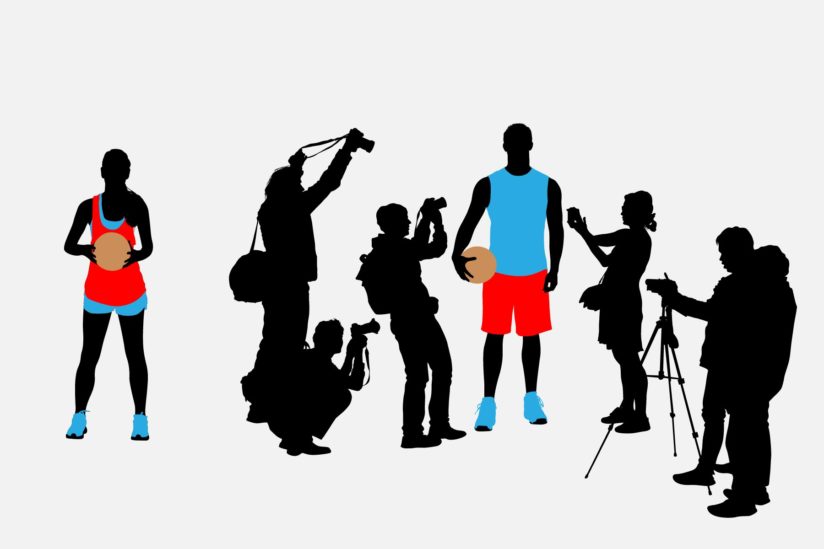
Sport is mainly viewed through a male lens because for decades it has been aimed at audiences mostly composed of men, and stories surrounding the female sporting experience have too often been under-appreciated. In addition to the limited coverage of women in this field, the media tends to represent women athletes as women first and athletes second with multiple references to appearances, age or family life. Instead, men are depicted as powerful, independent, dominating and valued as athletes (reference). This unbalanced gender portrayal is widespread and can negatively influence perceptions in terms of what society may expect from men and women.
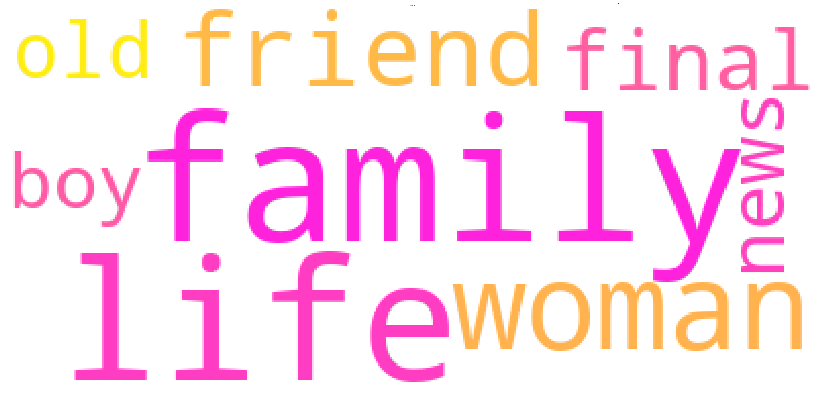
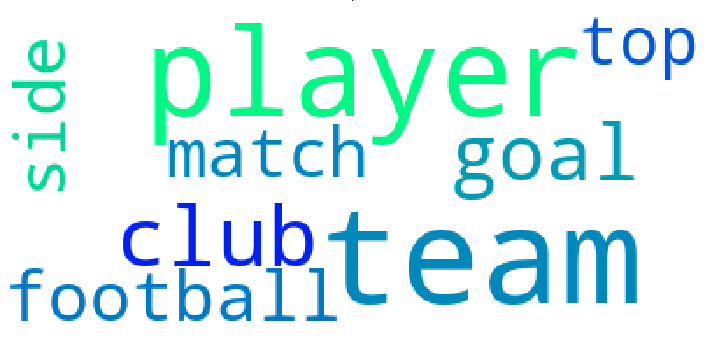
Distribution of quotes and topics worldwide
have almost no presence of women
are significantly different, which coincides with the spread of muslim religion
have surprisingly high fraction of female quotes
Are women less represented in high-placed occupations with respect to men?
In order to inspect the distribution of occupations across genders, we looked at the 700 most common professions worldwide and manually classified them in job groups in the fields of sports, academics, art and media. The group called ‘important people’ is a combination of economy, politics and military related jobs. All those speakers with an occupation which did not belong to any group have been merged in the category ‘Other’. Notice that very often a single person could practice multiple jobs and thus belonged to multiple occupation groups simultaneously.
Globally, the most striking differences can be observed for sports-related jobs where men dominate with almost 95% of presence. In addition, 82% of the important people are men. The gender gap is slightly smaller for the art and media occupations.
A further step in our analysis consisted in exploring how this situation changed across countries with different development levels.
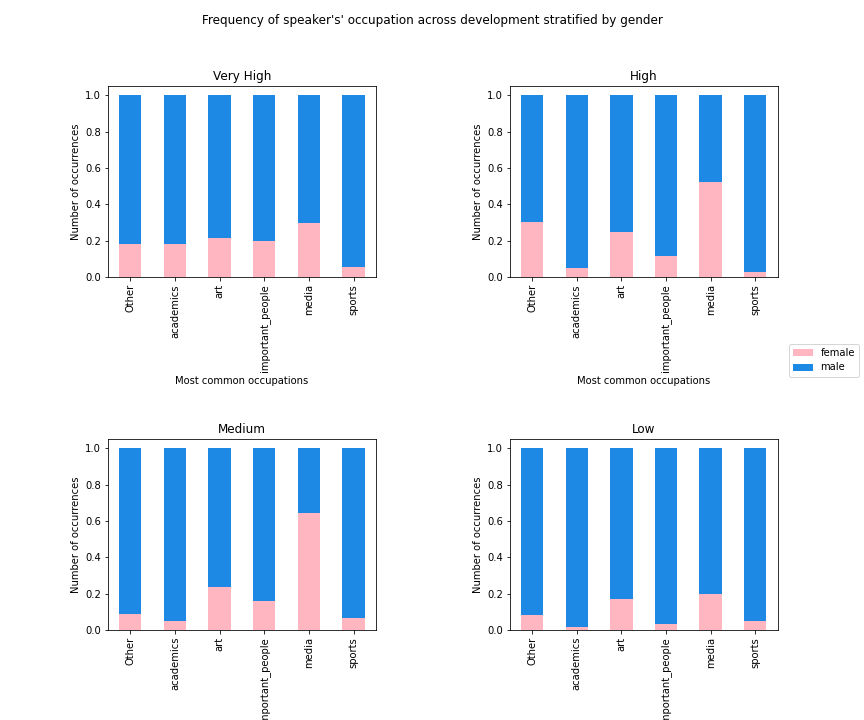
One striking observation that can be made is that there are almost no women practicing important people-jobs or academics occupations in poorly developing countries. This may be due to the fact that here women cannot exert their right to education. This difference is not so remarkable though when comparing the remaining groups. Unexpectedly, the presence of women dominates over men in the media profession in countries with a medium and high development level.
Women are absent in
science, business and politics in
low-development countries

How are previously discussed features affecting the success of a quote?
Observing the impact of speakers' gender and nationality
Last but not the least, here we would like to analyze the success of a quotation, measured in terms of its “number of occurences” in the media, across genders. To do so, a statistical test was performed to compare the two distributions of the “number of occurences” for men- and women-attributed quotes.
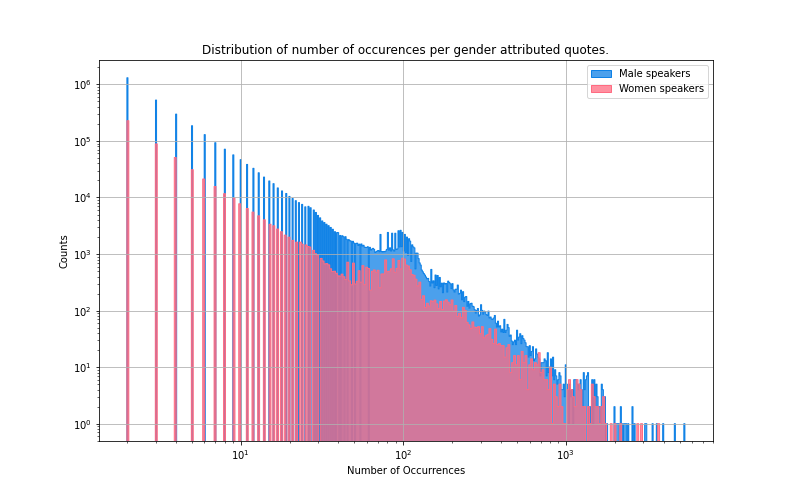
We could not conclude that men are statistically more successful than women. Indeed, by observing the graph above, we can notice that the two curves’ shapes are similar. One possible explanation for this could be that women struggle more than men to gain the media’s attention but once that step is past, they are equally successful.
Finally (for real this time), we repeated the same test on the two distributions of the “number of occurences” for women from developing (‘Medium’ and ‘Low’ groups) and developed countries (‘Very High’ and ‘High’ groups).
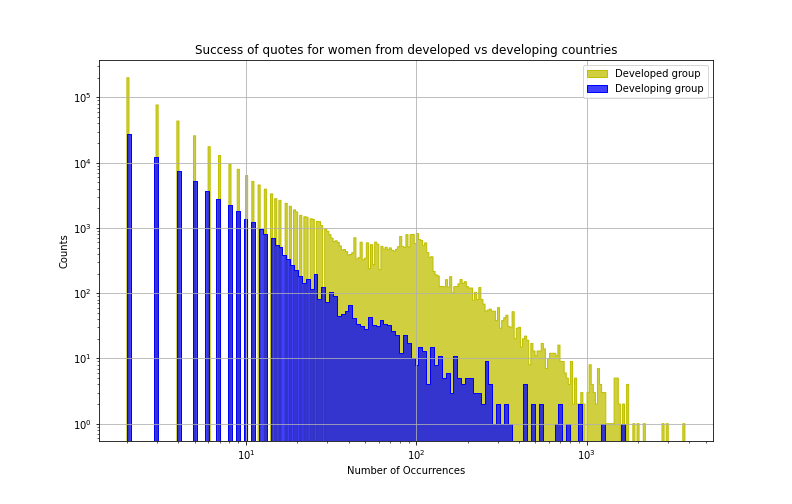
We found statistical evidence that quotes attributed to women from developed countries are more present in the media with respect to those from developing countries. However, the test statistic indicates that the difference between the curves is very small.
Concluding words
Our study highlighted how gender inequality in the media is still an issue, especially in developing countries. We strongly believe that transforming the role of the media can be an active player in achieving gender equality in societies.